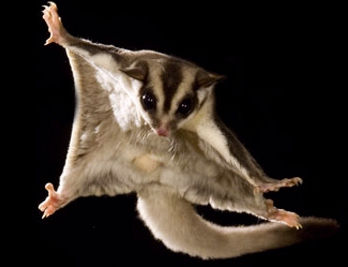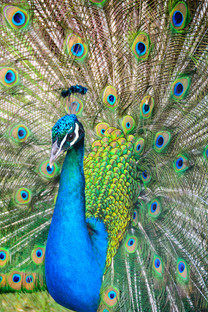Kids Corner: Strange & Unique Animals!
- Christine Iversen
- Sep 20, 2021
- 5 min read
Welcome back to Kids Corner!
Have you ever thought about how many kinds of animals there are? There are more species of animals than we know how to count, and what’s really amazing is just how different they all are.
Big and small, winged and scaled, animals that fly, swim, and run. Animals with long necks, big trunks, beautiful colors, and artful patterns. So many animals that make us say WOW!
Today we will talk about some of these unique, strange, interesting, and downright amazing creatures and just what makes animals of all shapes and sizes so awesome!
First, Some Incredible Animal facts!
Let’s start with a few animals you probably know about already…
Elephants

Elephants are the largest animals on land. We recognize them by their size, their long trunks, beautiful tusks, floppy ears, and short tails. Did you know:
It takes an elephant 35-40 years to reach its full size. With a lifespan of 60-70 years, that’s almost half its lifetime!
The trunk of an elephant is the most sensitive organ of any mammal. They can use it to drink, pick things up, and even delicately open a peanut. Some elephants have even learned to paint with their trunks!
An elephant eats up to 300lbs of food a day! Because they need so much food, they eat all day long. An elephant’s diet consists of roots, grasses, fruit, and bark. Yum!
Elephants communicate using sounds that sound like trumpet calls, some of which are too low for humans to hear, as well as body language, touch and scent. Elephants also communicate using seismic signals, sounds that cause vibrations in the ground. Elephants detect these vibrations in their bones!
Hippos

Hippos are the second largest animals on land. They are semi-aquatic, which means they live in both water and on land. We recognize them by their large bodies, short legs, and enormous heads. Did you know:
Male hippos can weigh up to 9,000 pounds! This is the same as three cars!
To stay cool in the African heat, hippos spend most of their days submerged in water. This is why their eyes and noses are on the top of their big heads.
After resting in the water all day, hippos become very active at night, when they emerge from the water to search for up to 150 pounds of food! Hippos are herbivores (they don’t eat any meat). They eat mainly grasses.
Hippos live to be 40 in the wild and up to 50 years old in captivity.
Hippos can run up to 30 miles per hour on land! This is about as fast as a car drives in most cities and towns. Most humans can run about 9 miles per hour.
Foxes

Foxes are not only cute, but they are some of the smartest animals. We can recognize them by their furry bodies, fluffy tails, pointed noses, and cat-like ears. There are more than 30 different species of foxes, but the most common are the red fox and the grey fox. Did you know:
A group of foxes is called a skulk or a leash. They live together as families in underground dens.
Male foxes are called dog foxes, and female foxes are called vixens. Vixens can have up to 11 pups (babies) at a time.
Foxes stink! They have a musky smell that comes from a gland underneath their tails.
What does the fox say? Foxes can make up to 40 sounds, including a screeching howl that sounds like a scream.
Foxes are very playful. They have even been known to steal golf balls from golf courses to play with!
Foxes use the Earth’s magnetic field to help them locate prey. When hunting, they can see the field and hear their prey, even when it is deep below the snow. Foxes pounce into the snow, diving up to 3 feet down! Check out this video of a fox hunting in the snow!
Bats

Bats are small animals, but they are big in number! There are over 1,100 species of bats in the world, with 40 species living in the United States. There are so many bats that they make up a quarter (25%) of all the world’s mammals! Did you know:
Bats can fly up to 60 miles per hour! That’s twice as fast as hippos run and over six times as fast as most humans can run.
Bats are not blind, but they do find their food in total darkness. Bats come out at night, and they use high-pitched sounds in order to locate insects to eat. They can tell where the insect is based on the echo of sound that bounces back to them after hitting an insect. This is called echolocation.
A group of bats is called a colony. Bat colonies vary in size, but there can be anywhere from a few dozen to a few hundred bats living together.
There are over 300 species of fruit that depend on bats for pollination. This means that without bats carrying the pollen from plant to plant, we would not have many of the fruits we love, including bananas, avocados and mangoes.
But the real question is...have you heard of these incredible and strange animals?

The axolotl, perhaps the most adorable salamander in the world, always with a smile on its face. Axolotls have gills and live underwater when they’re young, but they grow lungs and move to the land as adults. They can grow to be about 9 inches long. They are found in only one lake in the world, outside of Mexico City!

The Australian sugar glider is a palm-sized possum that can glide through the air for half the length of a soccer field. Sugar gliders are nocturnal animals (they are awake at night) that are more closely related to kangaroos than other species of flying squirrels.

The angler fish is perhaps one of the scariest-looking deep sea creatures, but they are unique! An angler fish lives at the bottom of the sea, where it is pitch black. The females use a “lure” (which looks like a lantern sticking out of its giant head) to attract their prey, which they eat with mouths almost the size of their heads!

The pangolin is a spiky, scaly ant-eater that rolls up in a ball and sticks out its scales to protect itself from predators. There are 8 species of pangolin that live in Africa and Asia. Unfortunately, due to their unique scales, pangolins have been hunted and sold by humans so much that they are now critically endangered, meaning they might not be around for very much longer.
Create Your Own Unique Animal!
Now that we’ve read about just a FEW of the incredible and different animals that exist in our world, let’s use our imaginations to come up with our own unique animals.
First, answer some basic questions about your very own animal:
Where does your animal live?
On land
In the sea
In lakes and rivers
On land and in water (semi-aquatic)
Mostly in the trees or the sky
Somewhere totally unique, like in the clouds, inside trees, or on other animals!
What size is your animal?
Tiny, like an insect
Small, like a bat
Small/Medium, like a squirrel
Medium, like a fox
Big, like a deer
Huge, like an elephant
Giant, bigger than any animal on Earth!
What are some characteristics of your animal? (Pick as many as you’d like!)
Scales
Feathers
Fur
Wings
Tusks
A trunk
Stipes, spots, or other patterns
Fins
No legs, two legs, four legs, or more?
A super long neck
A super long tongue!
Big teeth
Long nose
Tail
Tentacles
What kind of eater is your animal?
Herbivore (eats only plants, nuts, seeds, bark)
Omnivore (eats plants and other animals)
Carnivore (eats only other animals)
What is your animal’s personality? (Pick as many as you’d like!)
Playful and fun
Aggressive (mean)
Smart
Sleepy
Energetic
Helpful and kind
Hard-working
Lazy
Brave
Confused
Can you think of anything else about your animal? Write a list of your answers!
Draw Your Animal!
Grab some paper, a pencil or pen, and some crayons or paint, and let’s get creating.
Draw a picture of your animal in its natural habitat (home). Is it alone, or does it live with others of its kind? What are you most likely to see it doing - eating, sleeping, playing?
Don't forget to give your animal a name!
Ask your mom or dad to send us a picture of your animal, and we’ll share it on our website and social media pages!



















Comments